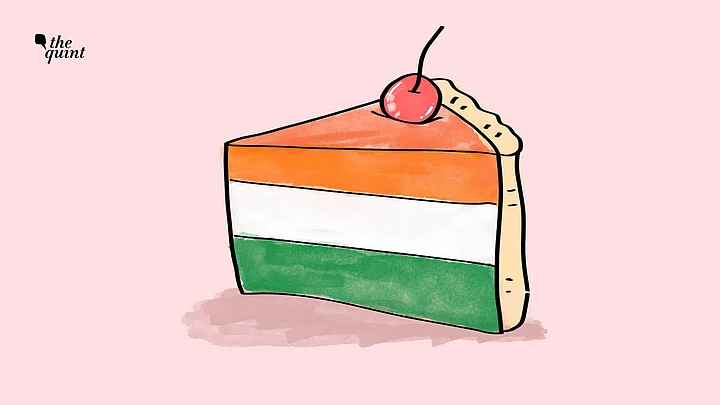No, cutting an Indian flag-themed cake is not a crime under the Flag Code. Why? Because it doesn’t prove at all that the people cutting the cake in a private celebration had any intention to publicly “insult”, “burn”, or “bring disrespect” to the Indian Tricolour.
This was the order passed by the Madras High Court on March 22 in a case seeking prosecution of people who had cut, distributed, and consumed an Indian flag-themed cake during a Christmas celebration. The judgment, which ran into 52 pages, not only exonerated the ‘cakemakers’ and the ‘cake cutters’, but also took a strong stance against conflating “hyper-nationalism” with the idea of national pride.
“There is no doubt that nationalism in a democracy like India is very vital. But, hyper and surfeit adherence to it goes against the prosperity of our nation from all its past glory.”Justice N Anand Venkatesh, Madras High Court
Seeking Criminal Case for Cutting a Cake!
The present case arose from a criminal complaint by a third party who was ‘aggrieved’ by the fact that a cake, measuring 6 feet long and 5 feet wide and sporting icing in the shape of a tri-coloured Indian map with the Ashoka Chakra in the centre, was cut, distributed and consumed by about 2,500 people, including 1,000 children, who attended a Christmas celebration.
Interestingly, the complainant himself was not present during the said Christmas celebration, where the celebration took place. His complaint was based on a newspaper article that had reported the incident.
The grievance of the complainant was that the representation of the Indian National Flag on the cake and the cutting of the same amounts to an offence under Section 2 of The Prevention of Insults to National Honour Act, 1971.
What Amounts to Insulting the National Flag?
Section 2 of the Prevention of Insults To National Honour Act, 1971, penalises any act, which insults the Indian National Flag and the Constitution of India with imprisonment, which may extend to 3 years, or fine, or both.
The Act’s scope is restricted to overt acts of insult to and attack on national symbols by burning, trampling, defiling or mutilating in public. It is not intended to prohibit honest and bonafide criticism of the symbols.
Some uses of the national flag that are prohibited under the Act are:
- using it on undergarments or any other dress material
- making any inscriptions on it
- using the national flag to cover a speaker’s desk or a speaker’s platform
- intentionally displaying the Indian National Flag with the “saffron” down.
- as a portion of costume, uniform or accessory of any description, which is worn below the waist of any person
One Must Have the Intention to Publicly Insult
The Madras High Court categorically noted that to constitute a crime under Section 2, there has to be the presence of “mens rea” or intention to publicly insult the national flag. The court further observed the threshold to prove intention was higher in this case and that such a malafide intention to cause contempt must be apparent.
“Patriotism is not determined by a gross physical act. The intention behind the act will be the true test and it is possible that sometimes the very act itself manifests the intention behind it.”Madras High Court
A Stand Against "Fetishisation of Compulsive Nationalism"
The present judgment took a step further from the facts of the case and presented a commentary on why it was important to reject hyper-nationalism. By invoking the words of jurist Nani Palkhivala and Nobel laureate Rabindranath Tagore, the court said: “A patriot is not one who only raises the flag, symbolises his national pride and wears it on his sleeve, but also a person who bats for good governance. The symbolisation of national pride is not synonymous with patriotism, just like how cutting a cake is not unpatriotic.”
While noting that the Flag Code does provide a mechanism for disposing of the National Flag in private, the court highlighted that as not all will be aware of that procedure, it should not subject such people to prosecution under section 2.
“A wayfarer, for the mere sake of publicity, should not be allowed to expose people to criminal prosecution for some innocuous acts which by themselves cannot be construed to be an insult to make it an offence under Section 2 of the Act.”Madras High Court
(At The Quint, we question everything. Play an active role in shaping our journalism by becoming a member today.)
